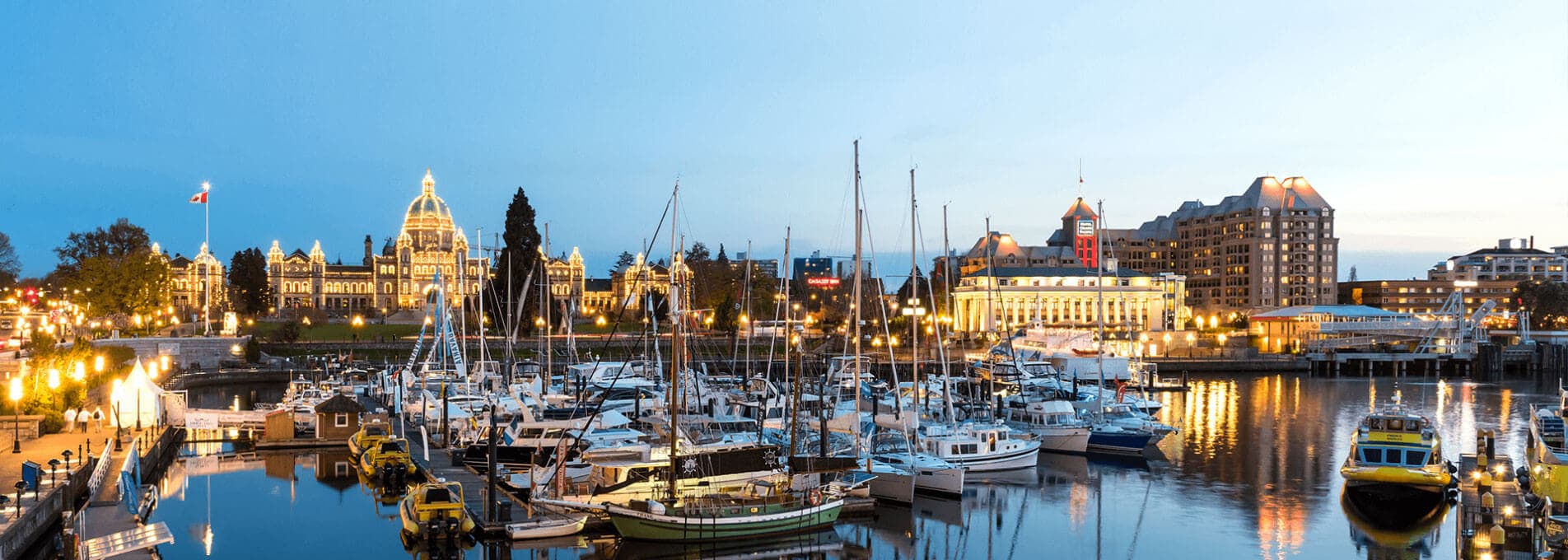Greater Victoria Harbour Authority increases certified environmental ranking for Victoria Cruise Terminal at The Breakwater District
Sept. 1, 2020, Victoria, BC, Canada – The not-for-profit Greater Victoria Harbour Authority (GVHA) has achieved a ranking of 3.7 out of 5 by Green Marine, an increase over their previous 2018 score of 3.3 and one that places the deep-water port among the most environmentally sustainable ports in North America.
Green Marine certification results are compiled on a scale of 1 to 5, where one illustrates the monitoring of regulations and five illustrates excellence and leadership. The average score for participating ports, across all applicable areas during the 2019 reporting year, was 2.8. GVHA, in partnership with terminal manger Western Stevedoring, scored a 3.7, building on its 2018 overall score of 3.3 and placing the organization in a leadership position among North American ports.
“I am incredibly proud of our organization for an unwavering approach to environmental sustainability and improvement, which is showcased in our improved Green Marine ranking,” says Ian Robertson, CEO, Greater Victoria Harbour Authority. “Our commitment to improvement is long-standing and continues to evolve with the addition of new programs, monitoring, and reporting, as well as a process of collaboration with thought leaders, community members, and partners.”
The increase in score from 2018 to 2019 is largely due to increased scoring in the ‘Environmental Leadership’ category, which rose from a 3 to a 5. Gains were also made in the newly introduced category of ‘Underwater Noise’ with the organization’s efforts in working with the Southern Resident Killer Whale Recovery Communications Committee and Ocean Networks Canada to better understand the local impacts and help to implement solutions around this poorly understood pollution source.
GVHA performed ahead of North American port averages across all categories while achieving excellence in ‘Community Impacts’ and ‘Environmental Leadership’. In addition, year-over-year improvement is a requirement for organizations in order to recertify, which GVHA has done since joining the program in 2011. GVHA’s partnership and engagement with other Green Marine and environmentally focused organizations has facilitated a shift to environmental practices being rooted in operations.
“I appreciate the focus and commitment of the GVHA staff in pursuing sustainability goals that improve our working harbour,” said Dave Cowen, Board Chair, Greater Victoria Harbour Authority. “It is rewarding to see that the hard work of the team has paid off in an increased rating through Green Marine, in addition to the pursuit of further improvement over the medium-term.”
The organization will continue to work with its partners and community towards continued improvement across environmental categories in 2020. GVHA’s latest project is the feasibility study and business case for shore power at the Victoria Cruise Terminal at The Breakwater District; results are expected by fall 2020.
Green Marine is the premier environmental certification program for North America’s maritime industry. The voluntary program helps port managers surpass basic regulatory requirements and become leaders in managing their port operation’s environmental impacts.
For further information on Green Marine, visit https://green-marine.org/.
Backgrounder
Environmental programs underway at The Breakwater District at Ogden Point
Emissions Inventory & Shore Power Feasibility
In January 2019, GVHA hired Synergy Enterprises to conduct a full-scale emissions inventory for The Breakwater District at Ogden Point. Results were provided and released in October 2019 showing that greenhouse gas emissions at the terminal were equivalent to 3,241 cars on the road per year. Between 2010 and 2018, cruise ship passenger counts increased 45% while GHG emissions only increased 19.1% due to increasingly stringent emission standards and technological efficiencies. The report also found that since 2010, criteria air contaminants have decreased by 41%, SOx has been reduced by 95%, and particulate matter has been reduced by 79%.
Following the results from Synergy Enterprises, the GVHA Board of Directors instructed staff to undertake a feasibility study and business case for shore power to reduce carbon emissions at the terminal. The shore power study is underway, with results expected by fall 2020.
Ground Transportation Equipment Upgrades and Improved Flow of Passengers
Buses operating on the terminal must meet the highest EPA (USA) standard, or 2010 for bus engine age. As of 2019, all buses on the terminal were at this level or newer. The bus age requirements are some of the strictest of any cruise port of call worldwide.
For the 2019 cruise season, Pacific North West Transportation Services – the carbon neutral bus provider for the terminal – continued to strive towards zero emissions adding double-decker buses to facilitate demand for more passengers while limiting the need for additional bus trips to pass through the community.
During the 2019 cruise season, a proactive campaign was in place to encourage the walkability to/from the Victoria Cruise Terminal to downtown via Fisherman’s Wharf and James Bay. Close to 30% of passengers disembarking ships calling to the Victoria Cruise Terminal chose to walk to the heart of the city when visiting Victoria.
James Bay Air Quality Monitoring
Since 2011, our organization, in partnership with the BC Ministry of Environment and Vancouver Island Health Authority, has provided funding to monitor air quality for ambient Sulphur Dioxide (SO2) levels in James Bay. The James Bay environmental air monitoring station has not had any elevated readings in more than two years, and SOx emissions remain well below recommended safe levels. The GVHA looks forward to working with its partners and community to bring air quality monitoring into 2020.
Lighting Upgrades & A Feeding Perch
By lowering, focusing, and upgrading the high mast lights with LED, GVHA reduced emissions from this source by ~45%. While performing modifications, the organization took the opportunity to enhance raptor habitat by building an eagle feeding perch platform. The 30-metre-high structure provides American bald eagles a strategic vantage point. Monitoring shows consistent use by eagles for foraging, feeding, and rest.
To learn more about GVHA’s environmental sustainability, click here.




